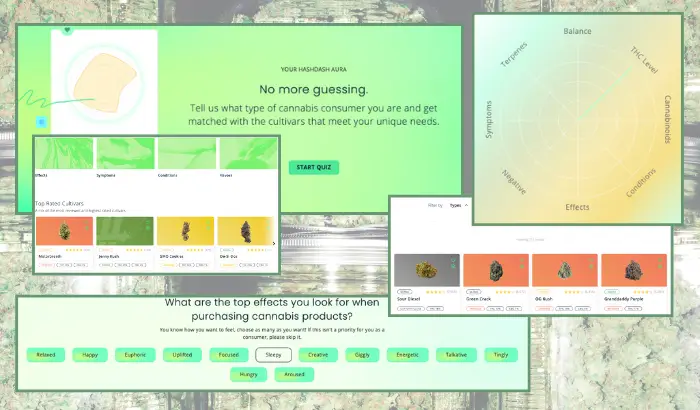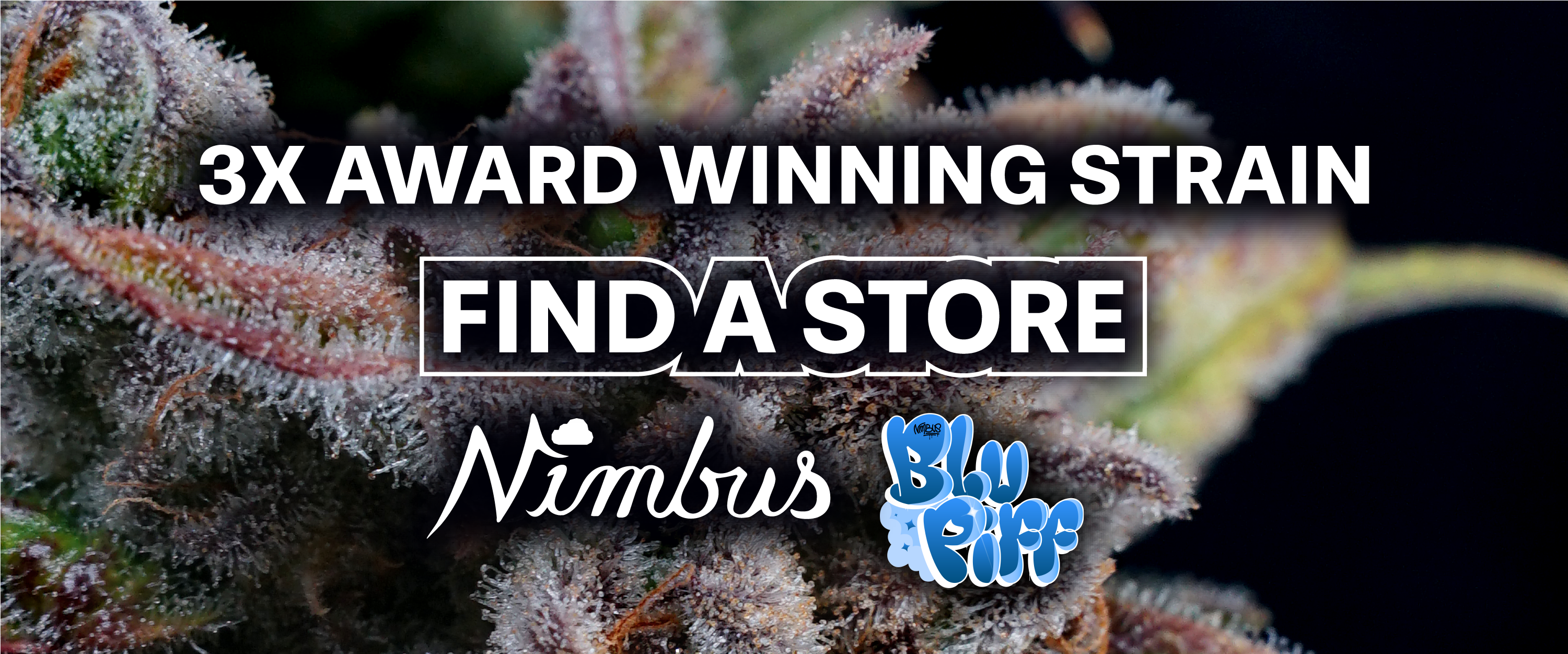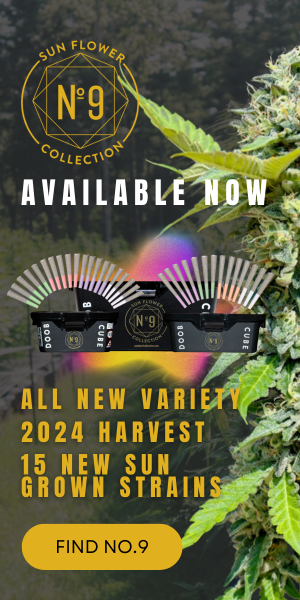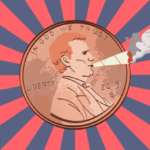
“Cannabis consumers have long struggled with the overwhelming array of choices available in the market. … HashDash simplifies this process.”
Last week, we received a media release about the “world’s first personalized cannabis matching platform,” claiming the tool will “revolutionize the way consumers discover and enjoy cannabis.”
Naturally, we were skeptical, but then we signed up. As it turns out, while HashDash is still in beta, it’s as promising as it is powerful, and certainly offers a real potential “comprehensive solution to” parsing the “overwhelming variety of cannabis strains, consumption methods, dosages, cannabinoid profiles, terpenes, flavors, and effects that often perplex consumers.”
Furthermore, it already works. I took the platform’s “detailed seven-minute quiz,” helping it “gather insights into preferences on effects, terpenes, flavors, cannabinoids, and any particular conditions or symptoms [consumers] aim to address,” and lo and behold, it recommended some of my favorite sativas.
It’s a massive undertaking, but HashDash CEO and Founder Scott Lynch seems up to the task, with a past knee-deep in grass and a focused outlook for his product. We asked him a volley of questions about this impressive new cannabis tech and how it’s tooled to match us with the next buds we are sure to love …
First of all, you’re in New Hampshire—the island of no weed in the middle of a very green New England. What’s it like being a cannabis guy in the Live Free or Die But Don’t Get High state?
I refer to New Hampshire as “Prohibition Island.” Living in a state that has long-resisted recreational cannabis legalization while only allowing medical use hasn’t been easy. I’ve spent years advocating for legislative changes, writing numerous letters to local politicians urging them to embrace modernity and listen to the voices of the people. The issue has become deeply personal for me, especially considering the devastating impact of alcohol and opioids on my family. Knowing the remarkable potential of cannabis as a resource and medicine, yet seeing it inaccessible to many, fuels my passion for reform. Having had the privilege of visiting nearly every recreational state in the US, witnessing the vibrant diversity of products, dispensaries, and consumption lounges only intensifies my desire for New Hampshire to embrace similar possibilities.
What is your background with weed, cannabis science and discovery, all that good stuff?
For slightly more than a decade, I dedicated myself to the back end of the cannabis industry, primarily focusing on cultivation. Our venture included launching a cultivation facility with an integrated lab in Denver, Colorado. We meticulously analyzed hundreds of thousands of tissue cultures across various cannabis strains to identify the ideal NPK [nitrogen, phosphorus, and potassium] ratio and crafted fertilizers tailored to meet cannabis’ specific nutritional requirements. Over the decade, I traveled to diverse cultivation facilities, from local caregivers and outdoor grows in Humboldt County to major MSOs like Trulieve in Florida, and even large-scale facilities such as Organigram in Canada and PRICH in Puerto Rico.
This journey revealed the intricate complexity of cannabis, with cultivators constantly learning and adapting. Recognizing the potential confusion and intimidation this complexity posed for consumers, I saw a clear problem and laid the foundational groundwork for HashDash.
What was the original idea for HashDash, and what has it evolved into thus far as your team has worked on it?
Initially, the concept behind HashDash revolved around a monthly subscription box, aiming to curate physical products customized to each consumer’s preferences. However, due to various obstacles such as regulatory constraints and logistical challenges, we opted for a more versatile digital approach. This shift enabled us to reach a larger audience and deliver greater value at scale. Today, HashDash serves as a guide for cannabis consumers, simplifying the complexities of the industry by identifying strains that precisely match each individual’s unique needs. Our platform empowers consumers to explore cannabis confidently, leveraging our data-driven insights and educational resources to navigate their consumption journey effectively.
Has there ever been a public database or platform that either inspired this project or maybe kind of fell short of accomplishing the kind of search and discovery that you seem to be setting up to do? Obviously some of the big dogs like Leafly have a ton of crowdsourced data and will draw comparisons, whether accurate or not. What’s your simple message about what this is?
We invested numerous hours delving into various industries, with a particular focus on entertainment, where companies like Netflix and Spotify stood out for their groundbreaking approaches to content discovery and decision-making. Inspired by their success, we envisioned a platform that could similarly revolutionize the cannabis landscape.
In addition to studying these giants, we conducted extensive research on Leafly, engaging in numerous user interviews to understand the platform’s strengths and weaknesses. What emerged was a clear demand for education and strain knowledge among users. However, there has been a sense of neglect and fragmentation in these areas previously. Our analysis suggested that Leafly’s shift towards profit-driven strategies, typical of public companies, might have led to this disconnect, prioritizing features that serve revenue goals.
Driven by a commitment to consumer needs, we set out to create a platform that puts users first. Our mission, “To empower cannabis enthusiasts and newcomers alike, transforming confusion into clarity in the vast world of cannabis consumption,” underscores this dedication. We’ve meticulously designed every aspect of our platform, from the matching algorithm to educational resources and community engagement, filling the gaps left by platforms like Leafly and prioritizing user experience and cohesion above all else.
On the beta platform that people can register for now, where does the existing information come from? From the THC percentages to star ratings, what is the source at this point?
We derive our data from various sources, some including online sources, employing a weighted system to assess both data accuracy and consumer feedback. What sets us apart is not only the diversity of our data sources but also our partnerships within the cannabis industry. We continuously explore opportunities to collaborate with leading data aggregators in the field. Once data is aggregated, we meticulously assess its accuracy and consider consumer feedback using our weighted system.

Let’s talk about the ability to have a customized experience on the platform. There are gears for “Beginner,” “Intermediate,” and “Expert,” with the latter described as “Terpenes, cannabinoids, flavonoids, nothing catches you off guard.” But speaking across all of those categories, who would you say is the target average user? What kind of person in general?
Our target audience is what we refer to as “canna-curious” individuals. These consumers come from diverse age groups, including those who may have had previous negative experiences with cannabis, individuals who currently use cannabis but feel uneasy about navigating dispensaries and engaging with budtenders, and those who recognize the potential benefits of cannabis but are unsure about how to maximize its effects.
With Hash Dash being so public-facing, what level of participation do you already have and how much do you need from cultivators and industry people for the data to reflect that level of knowledge?
Our platform is built upon three fundamental pillars: matching, community, and education. As part of our dedication to providing accurate information to consumers, we’ve established a partnership program focusing on the community and educational aspect. In this program, we’ve partnered with industry influencers and experts, including five doctors, to review all our guide materials for accuracy and contribute to the platform. Additionally, we’re forming a science advisory board to further enhance our platform with data-driven insights and scientific rigor.
I like the effects options: relaxed, happy, euphoric, uplifted, focused, sleepy, creative, giggly, energetic, talkative, tingly, hungry, aroused. I actually clicked them all except “sleepy.” In that regard, how much will one have to narrow down their preference for this to really work?
When users provide more details about their preferences, our algorithm can enhance the accuracy of their strain matches. Furthermore, additional interactions on our platform enable us to fine-tune these matches. For instance, if a user gives a thumbs-up to a strain, we leverage this information to prioritize similar strains for them. Conversely, if a user gives a thumbs-down, we use this data to de-emphasize similar strains. Therefore, even with minimal input, our machine-learning capabilities enable us to continually improve match accuracy.
I noticed one of the “go-to moods” to choose from is “Drool.” The others are “Woohoo,” “Hyper,” “Balanced,” and “Chill.” But please, tell us, what is “Drool” exactly? We think we have some idea but want it in your words.
While we’re trying to solve a very serious problem, we still want to embody the tone and vibe that makes the cannabis industry so great. Any chance we get to work some fun and playfulness into the platform, we take. As for this question, this pertains to the mood the consumer aims for concerning energy levels. Do they lean towards strains that uplift and energize, or do they prefer those that soothe and relax?
How will your system account for not just differences between strains, but differences down to the phenotype? With the kind of pheno-hunting going on these days, it’s like branches of a tree, sometimes with wildly different tastes and effects. Can a system like this account for that? I assume you are going to say that people have to keep digging and read further down past the star ratings …
Coming from a background in cultivation, this question resonates deeply with us, and it’s a challenge we’re committed to tackling in the long term. Unfortunately, many consumers aren’t aware that a strain like Wedding Cake can vary significantly in its terpene and cannabinoid profile from one dispensary to another, or even from one harvest to the next at the same cultivation facility. Our strategy for addressing this challenge revolves around education. We’ve developed guide chapters covering topics such as “Phenotype,” “How To Read Cannabis Product Labels,” and “How To Read A Cannabis COA”. While accurate strain data is crucial, we believe that educating users and making the experience engaging through gamification are equally vital components of the solution.
As the adage goes, “Give a man a fish, and you feed him for a day; teach a man to fish, and you feed him for a lifetime.” It wasn’t sufficient to merely provide consumers with their cannabis strain matches; we aim to incentivize education. We sought to equip consumers with the knowledge to approach dispensaries confidently and ask pertinent questions. This educational component has become the ‘learning’ section of our platform—nine guides comprising 70 chapters and over seven hours of reading.
What have you learned so far in beta? What tweaks have you made and what still needs to be done?
In the two weeks since our launch, our primary focus has been improving user experience by addressing bugs. Our developers have successfully resolved 37 issues. Moving forward, we anticipate a two-month beta phase for fine-tuning, during which we’ll continue to refine SEO, improve mobile compatibility, and eliminate any remaining bugs. Looking ahead, we have a robust product roadmap with 117 new features aimed at further enhancing our platform. As we gain traction, user feedback will guide us in prioritizing features that are most-desired by our users.

























